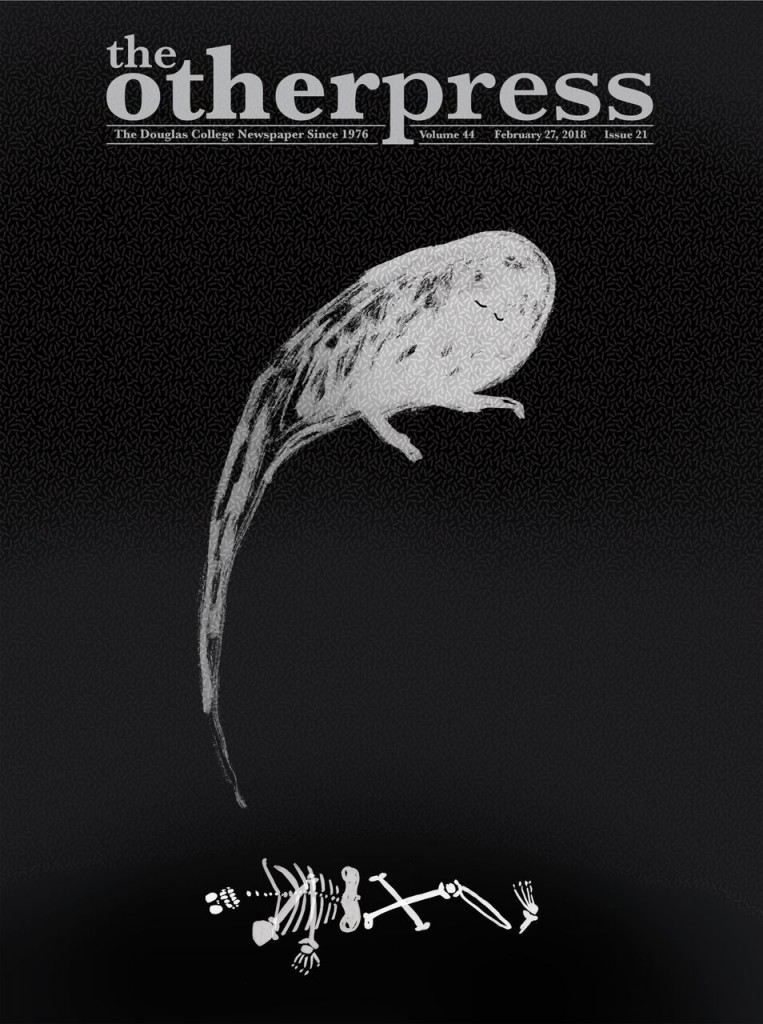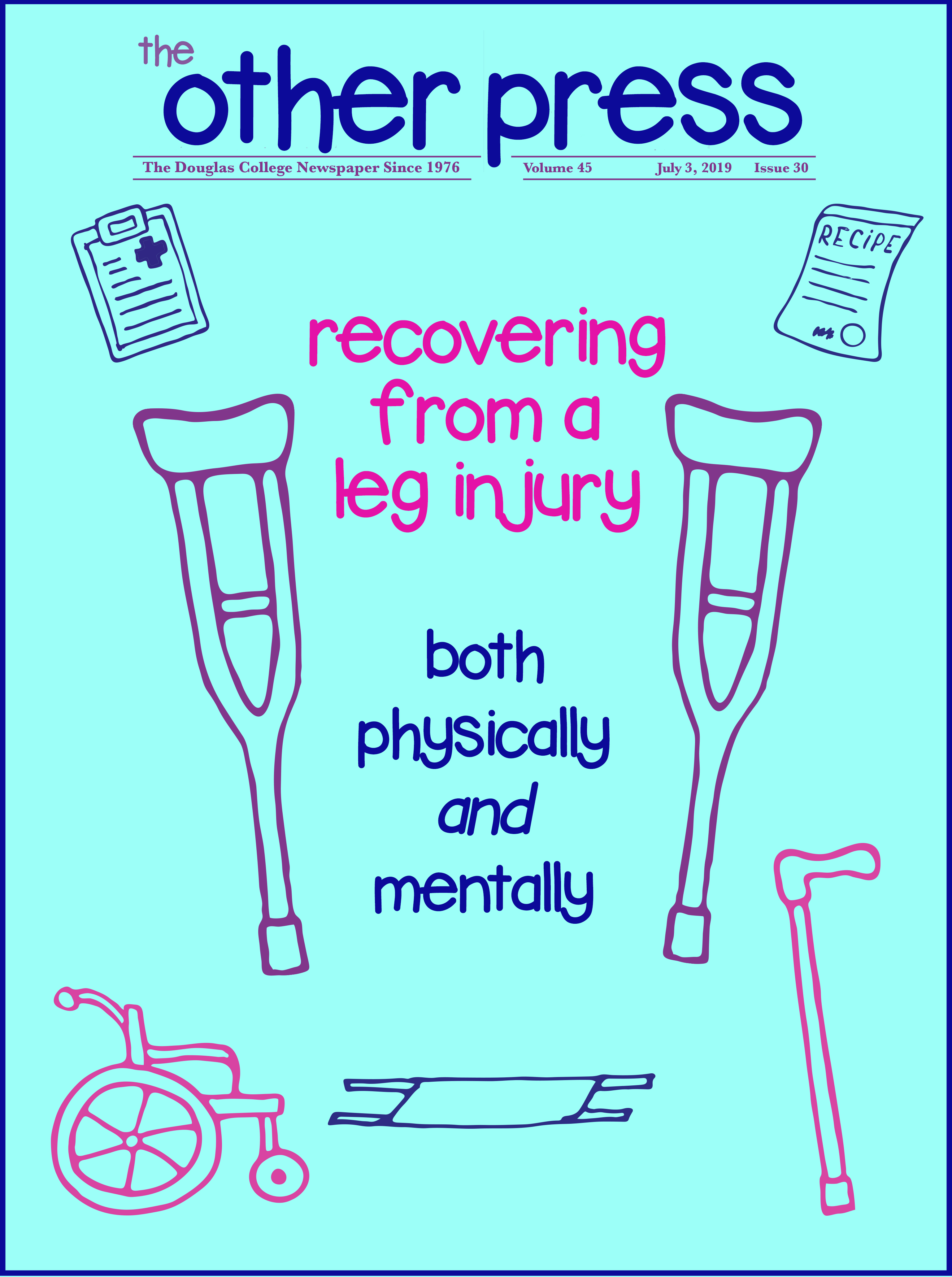
How near-death experiences and religion sculpt our view of the afterlife
By Jacey Gibb, Distribution Manager
Monique Zander was only four years old when she had her first near-death experience.
“I have this crystal-clear memory, or at least how I perceived this event,” said Zander. “It’s burned into my brain. I can picture the whole thing in my mind, the space, the kind of weather. It’s really amazing how that resonates with me.”
Zander was at the lake with her parents, and her father asked her to carry two tackleboxes to the end of a dock. Focused on not dropping the tackleboxes, Zander made her way onto the dock—and walked right off of it, into the lake. She recalls vividly what happened next:
“I remember hitting the icy water and just sinking, and to this day, I can see what it looked like at the bottom of the lake. It was a coppery brown, with the sun shining through the water, and it was dead silent and the most peaceful experience I’ve ever had in my life.”
Their family dog, a black Labrador named Satan, saw Zander walk off of the dock, and dove in after her, pulling Zander up by her down-filled jacket. Satan had almost dragged her to shore before Zander’s parents realized what had happened.
Though Zander experienced none of the light at the end of the tunnel or heavenly music—things often associated with near-death experiences—it did have an impact on her.
“It gave me faith. It makes me think that there’s divine intervention,” Zander said.
“There are so many people who have stories like that, that it’s too large to ignore, especially if you look at human society overtime. Every culture has stories like that. Since the beginning of [recorded time], there have been these kinds of stories, so I think there has to be truth to them.”
When it comes to exploring the afterlife and what that means for humans, near-death experiences—or NDEs—are just one anecdotal piece of the larger unknown puzzle.
Skeptics argue that the aftereffects of NDEs are simply biological symptoms from a body that underwent trauma, ranging from oxygen deprivation to our organs slowly shutting down. However, the sheer volume of NDE recounts and the shared elements across experiences lend the theory at least a hint of credibility. And the enigma around NDEs and their aftereffects has led to some intriguing research.
In one study conducted by the University of Michigan, researchers measured the electrical brain activity of dying rats after their heart stopped beating. Within 30 seconds of death, the researchers observed a spike in brain activity and found that “neurophysiological activity in the near-death state exceeded levels found during the conscious waking state.” Keeping in mind that this study involved rodents and not humans, the scientific evidence that mammal brains can produce brain activity representative of heightened conscious after the organism is dead is interesting.
NDEs aside, there’s another social phenomenon that tackles questions about the afterlife on the daily: Organized religion.
Religion and the afterlife go hand-in-hand; one rarely exists without some form of the other. And yet, even the mere concept of the afterlife varies drastically across religions—even amongst members of the same faith.
Christianity promotes the idea of Heaven and Hell, and those who don’t follow Jesus’ teachings are likely to wind up in the latter. Judaism is a bit coyer when it comes to the afterlife; Heaven and Hell are mentioned, and so is reincarnation, but most followers of the religion do not believe in the afterlife.
In Islam, this life is viewed as merely a preparatory phase for the next stage; if you die before the Day of Judgement—the day on which the world is destroyed—your soul waits in its grave, while you experience a preview of either pain or peace, depending on which you are destined for.
Other religions, such as Hinduism, view death as a sort of restart. You die, but your soul returns in the form of someone or something else. Similarly, Buddhism also believes in reincarnation, except your karma from the previous life dictates your status in the next one.
But the afterlife isn’t some great beyond, completely removed from our current world. A person’s belief in the afterlife—or lack of one—can influence how they live their lives in the present day.
Linda Christensen is a Humanities professor at Douglas College, with a specialization in religious studies. She’s found that the one commonality between all religious teachings is this: It matters how you live your life in this world, at this time.
“People have this sense—it’s either bad karma or ‘I’m going to be judged for my bad deeds’—that there are consequences,” said Christensen in an interview with the Other Press. “So that if you’re a schmuck in this life and the cops don’t get you, it’s going to get you on the other side. It matters how you live, and so that’s why all religions have this moral imperative.”
Christensen also said that some people fear being judged as a sinner as well, so this “drives them to live in a certain way.”
While the fear of judgement proves to be a motivator for some, if a person believes in reincarnation, they may also find themselves not worrying too much about death.
“If you feel like you’re always going to come back, that might lighten the load and you’ll feel like you don’t have to sweat it too much if you don’t get it 100 per cent this time, right?” explained Christensen. “For some people, it might be their card of escape, their kind of Joker, that ‘I can use it for whatever I want, and it’s no big deal if I don’t totally live the ultimate life here and now, because I’ll get another chance.’”
However, the global religious landscape—as well as the ways we perceive death and the afterlife—might be shifting.
A 2017 survey conducted by the Florida State University asked Americans if they identified as spiritual or religious, and the results were scattered. Thirty-one per cent of participants were found to be “neither spiritual nor religious” while twenty-nine per cent were “both spiritual and religious.” However, the most surprising is the 18 per cent that “are spiritual but not religious.” Nearly one fifth of participants fit the bill on spiritual, and yet totally reject the religious aspect.
The findings are unsurprising to Christensen, especially coming from a western country like the United States.
“This has been a trend in recent decades, and what that means is when people say they’re religious, it generally means they are committed 100 per cent in an exclusive way to one particular religion,” said Christensen. “When people say they’re spiritual but not religious, it means they don’t identify with one religion alone in that exclusive way. Instead, they would agree that there is some kind of a spiritual dimension or reality to life, and they tend to be eclectic.
“In our secular society, where we have this separation of church and state, of religion and politics, where no one religion is supported by the state in any kind of a way, we have total freedom of religion, and so we have pluralism.
“But if you’re in a country like Arabia, where there is no religious freedom and other religions are illegal, you don’t have that kind of option. The state totally enforces one religion upon people to follow, and then it’s a totally different story. Of course, everybody is ‘religious.’”
Zander considers herself to be a part of the “spiritual, but not religious” sect. After growing up in a very religious household, Zander enrolled at an international school when she was 15. There were students from every walk of life, and religions from all over the world.
“That’s when I decided that I would not be religious,” explained Zander. “I could continue to be a spiritual person, but I just felt that I didn’t have the right to judge anybody else and what their belief system was.
“Everybody was so equally committed to their own faith, that it just seemed wrong that one church would say they’re wrong, because I just felt like that was not fair, and that everybody was entitled to their own belief system, and that everybody was right. Why can’t everybody be right?”
Zander was also 15 years old when she had her second NDE. While hiking as part of a group up a steep, narrow mountain pass, Zander suddenly found herself falling backwards from the weight of her heavy backpack. Immediately, a push from behind forced Zander forward and prevented her from falling off a cliff. When Zander turned around to thank whoever had pushed her, no one was there.
Even with a handful of NDEs under her belt, Zander still has no idea what’s waiting for her post-life.
“I really don’t know,” says Zander. “I don’t spend a lot of time thinking about it. Every culture in the world has their own thoughts on what that would be like. As I get older, the more I think it’s just, you’re done and it’s out, like a light.”
We can listen intently as people recount near-death experiences; we can study levels of brain activity in deceased rats, and we can align ourselves with whichever religion or spiritual teachings speak to us. Ultimately, we’re no closer to understanding the afterlife or what comes next for humans. It’ll all remain a giant question mark until we, well, you know.

